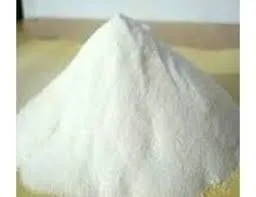
ഡിസം . 01, 2024 14:42 Back to list
hydroxyethyl cellulose solubility in water
Hydroxyethyl Cellulose (HEC) Solubility in Water An Overview
Hydroxyethyl cellulose (HEC) is a non-ionic, water-soluble polymer derived from cellulose, a natural polysaccharide sourced from plant cell walls. Its unique properties have made it a valuable ingredient in a wide range of applications, including pharmaceuticals, cosmetics, food processing, and industrial products. To understand HEC fully, it is essential to explore its solubility in water, which is a key factor influencing its functionality and performance in various formulations.
Understanding HEC Structure and Properties
HEC is produced by the etherification of cellulose with ethylene oxide, resulting in a polymer with hydroxyl groups that increase its water affinity. The degree of substitution (the average number of hydroxyethyl groups per anhydroglucose unit of cellulose) plays a crucial role in its solubility. Typically, HEC has a degree of substitution ranging from 0.5 to 2.5, which impacts its molecular weight and hydrophilicity. The higher the degree of substitution, the more soluble the HEC becomes in aqueous solutions.
The solubility of HEC in water is influenced by several factors including temperature, concentration, and the presence of salts or other solutes. HEC is known to dissolve readily in cold water, forming a clear, viscous solution. This property is significant for many applications where a stable and homogenous product is desired.
Solubility Characteristics
HEC’s solubility can be characterized as highly temperature-dependent. At elevated temperatures, the solubility tends to increase due to the enhanced molecular motion, which aids in overcoming the interactions between polymer chains. However, at very high concentrations, the solution can exhibit a phenomenon called gelation, where the increased viscosity leads to a semi-solid or gel-like consistency. This makes HEC particularly attractive for applications requiring thickening properties or gel formation.
hydroxyethyl cellulose solubility in water

Interactions with salts are also pertinent when considering HEC’s solubility in water. In the presence of electrolytes, HEC can exhibit salting-in and salting-out effects. Generally, low concentrations of salts can enhance the solubility of HEC in water, while high concentrations may lead to precipitation or reduced solubility. This behavior is essential for formulators to consider, particularly in the pharmaceutical industry, where the composition of a solution must remain stable for efficacy and safety.
Applications of HEC Based on Its Solubility
The water solubility of HEC lends itself to a plethora of applications. In the cosmetics industry, it is often used as a thickening agent in lotions, creams, and gels. Its ability to retain moisture makes it an ideal component in moisturizing formulations. Moreover, its efficient emulsifying properties facilitate a stable blending of oil and water, which is crucial for many cosmetic products.
In the pharmaceutical sector, HEC can be utilized as a binder in tablets and as a viscosity-increasing agent in liquid formulations. Its solubility and gelling properties allow for the controlled release of medicinal compounds, improving drug delivery systems. Additionally, HEC finds use in the preparation of ophthalmic solutions and gels, where clarity, viscosity, and compatibility with biological tissues are paramount.
Furthermore, HEC is widely used in the food industry as a thickening agent and stabilizer. Its solubility in water enables it to be employed in various food formulations, including sauces, dressings, and dairy products. HEC’s ability to modify the texture and provide a desired mouthfeel enhances the overall sensory experience of food products.
Conclusion
In summary, hydroxyethyl cellulose is a versatile polymer with significant water solubility that enhances its application in various industries. Its unique properties, influenced by factors such as degree of substitution, temperature, and the presence of salts, make it a highly valuable component in formulations across the pharmaceutical, cosmetic, and food sectors. Understanding HEC’s solubility characteristics not only aids in optimizing its use but also paves the way for innovative applications that leverage its exceptional properties. As research continues to unfold, the potential for HEC will likely expand, solidifying its role as a crucial ingredient in modern formulations.
-
tile-bonding-additives-for-stronger-bonds
NewsAug.22,2025
-
construction-grade-rdp-for-wholesale-needs
NewsAug.22,2025
-
trusted-wholesale-hec-partners
NewsAug.22,2025
-
hec-solutions-for-industrial-excellence
NewsAug.22,2025
-
construction-additives-need-hpmc-essentials
NewsAug.22,2025
-
hpmc-versatile-cellulose-ether-for-industries
NewsAug.22,2025







